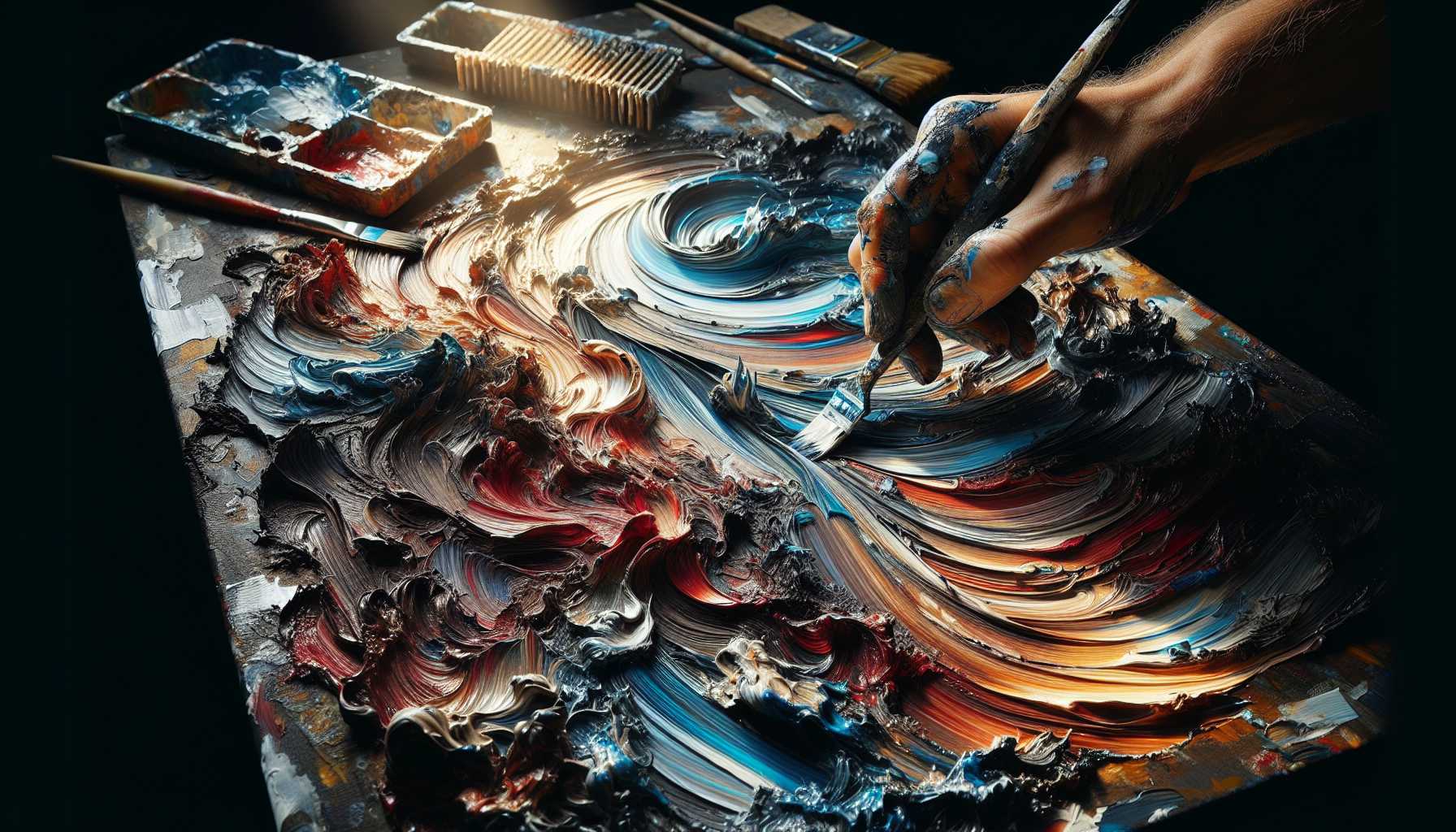Have you ever marveled at the captivating textures in works of art and wondered how they were created? Allow me to take you on a journey through the intriguing realm of acrylic paint scraping! As someone who has spent many years exploring this technique, I’m thrilled to pass on some of my favorite hints and insights.
An Introduction to Paint Scraping
Paint scraping is akin to conducting a magic show with layers. You apply paint and then remove sections of it to unveil stunning patterns. It’s somewhat similar to discovering hidden gemstones beneath the surface! And the best part? No expert skills required to begin your experimental journey.
Necessary Tools for Artistic Victory
Here’s a list of the essential items you’ll need in your creative arsenal:
– Palette knives (my top choice)
– Old credit cards
– Scrapers
– Combs
– Textured materials
I always encourage starting with simple tools you might find around your home. Even a humble kitchen rubber spatula can create mesmerizing effects!
Fundamental Scraping Techniques
We begin with some techniques ideal for novices:
1. The Pull-Through – Draw your tool linearly through the wet paint.
2. The Fan – Make round movements for a feathered visual effect.
3. The Grid – Construct intersecting lines in two directions.
Please do remember, paint scraping doesn’t have a “wrong method” – and that’s the beauty of this technique!
Crafting One-of-a-kind patterns
And now, the exciting bit! Here are some pattern suggestions:
– Wave patterns using arched scraping
– Tree bark effects using irregular motions
– Abstract designs using spontaneous movement
– Geometric shapes with sharp edges
Personally, I find the most exciting patterns often arise from unexpected miracles. Don’t hold back on experimentation!
Layering Tactics
One professional tip I’ve discovered is to work in layers! You could try:
– Scraping through an array of colors
– Incorporating metallic paints between layers
– Developing depth with translucent colors
– Gradually fostering texture
Typical Errors to Dodge
We all stumble from time to time, but here are some lessons I’ve learned:
– Try not to let the paint dry before scraping.
– Keep the pressure light when scraping.
– Always clean your tools after every color swap
– Try not to fiddle too much with the painting surface.
Advancing Your Skillset
Feel you’re ready to jump up a level? Consider exploring these advanced strategies:
– Unite scraping with other artistic techniques
– Experiment with varying paint concentrations
– Introduce mediums for exceptional effects
– Create 3D textures
Artwork Preservation
Secure your masterpiece with these pointers:
– Let every layer fully dry
– Use high-quality varnish
– Keep artwork preserved and stored suitably
– Handle artwork sensitively while it’s drying
Concluding Remarks
In essence, paint scraping is a thrilling expedition of discovery. Each piece of art you produce will carry its unique story, revealing a little more of the grandeur hidden beneath the surface. Dive in and start your own journey today!
